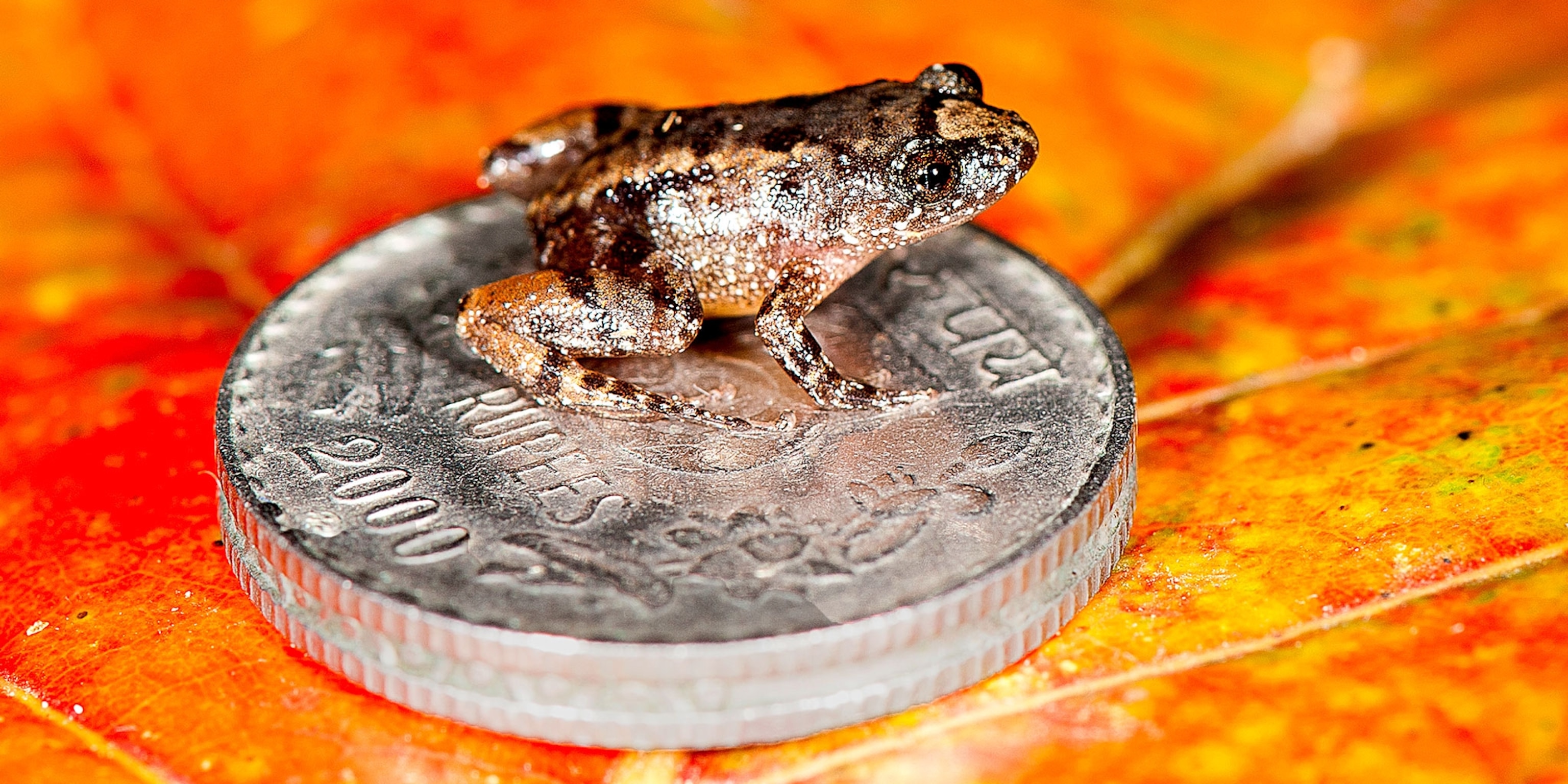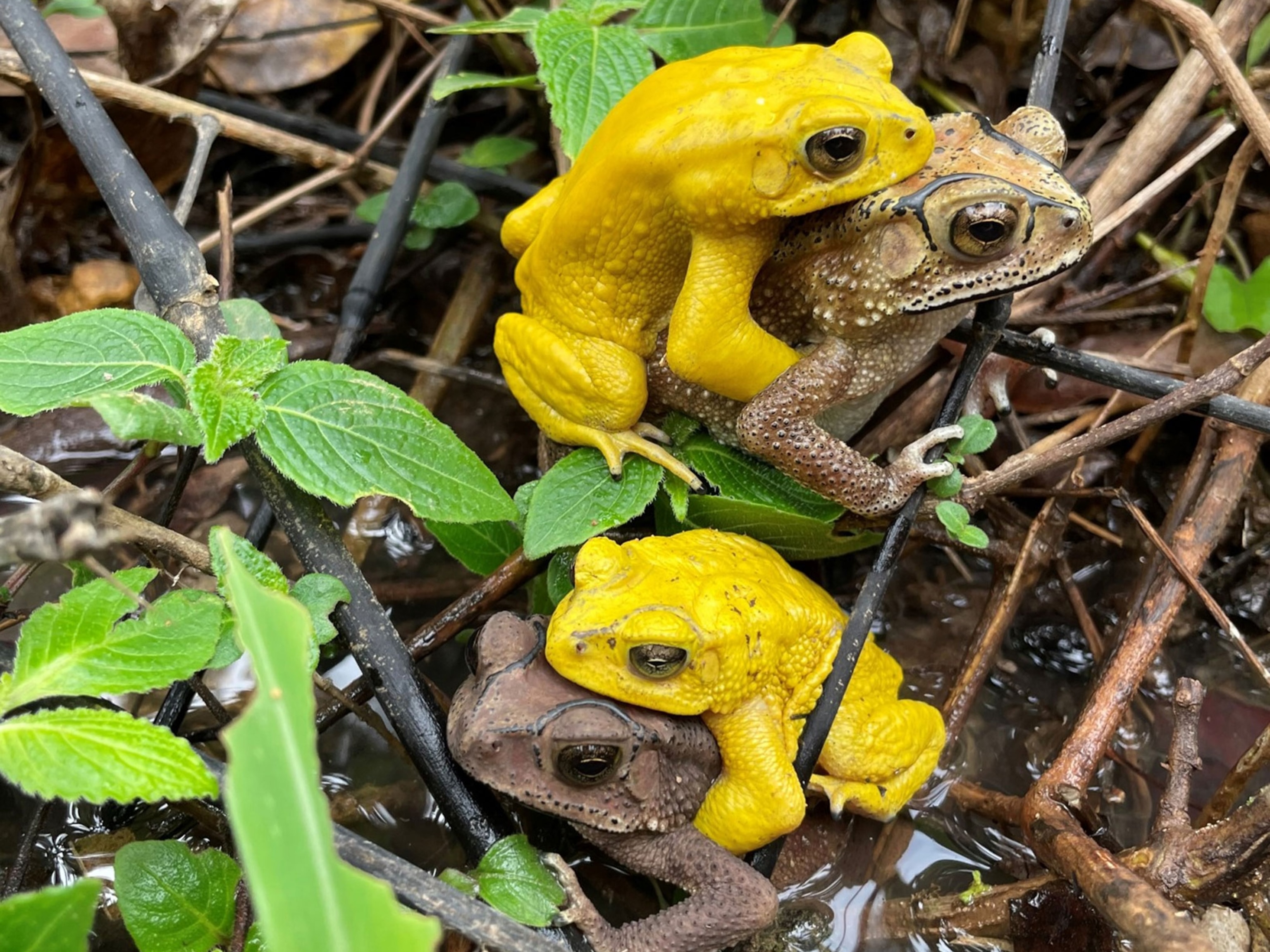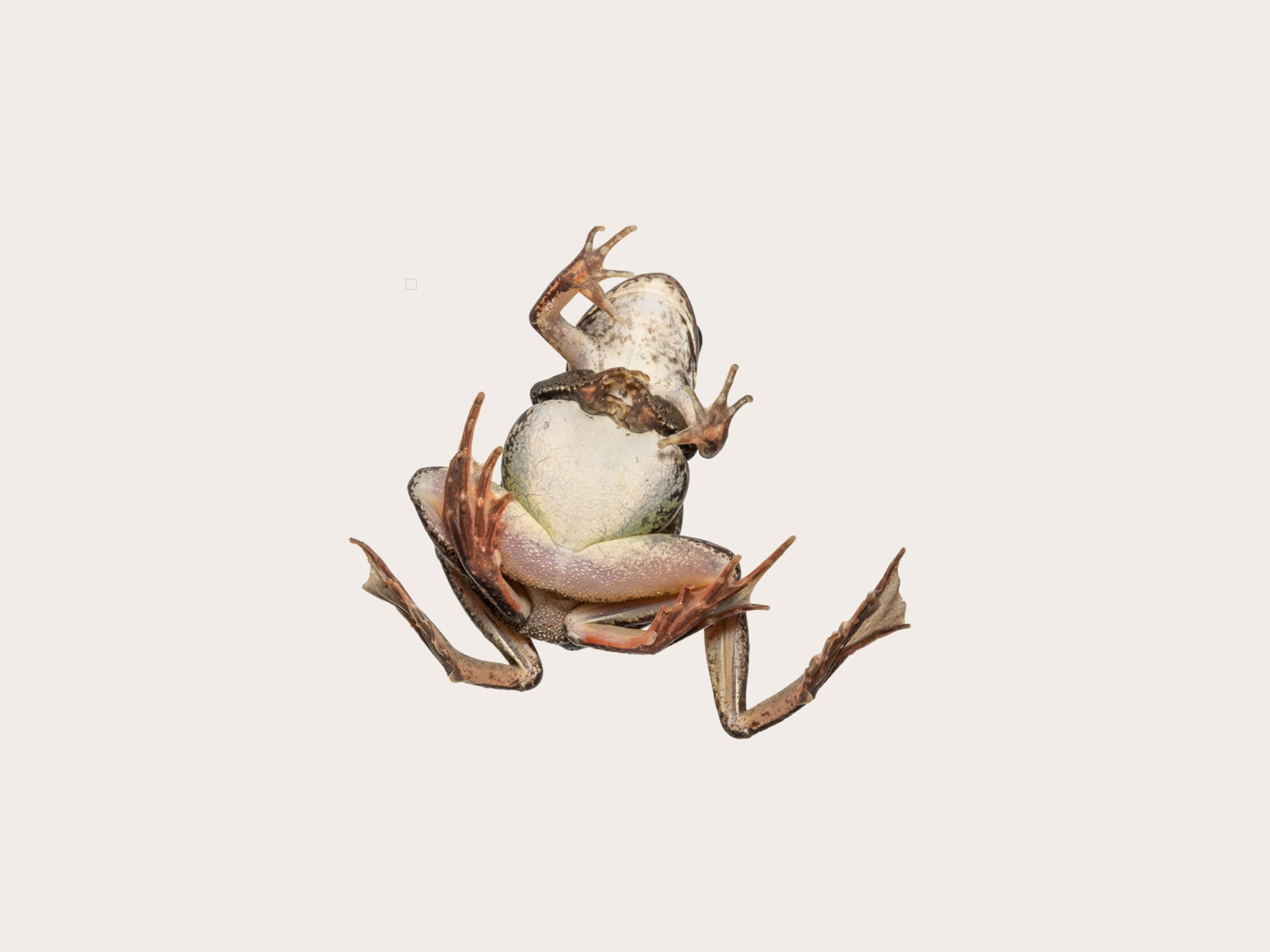7 M&M-Size Frog Species Found, Among World's Smallest
The tiny amphibians, which live in India's diverse Western Ghats, proved tricky to track down.
Scientists in India have made a sweet discovery: Seven new frog species, four of which are about the size of an M&M.
Commonly known as night frogs, the animals live only in the Western Ghats—a biologically rich mountain range that runs down western India.
The discovery adds to the 28 known night frog species, more than half of which have been identified in the past five years. (See pictures of more frogs found in the Western Ghats, including the meowing night frog.)
Sonali Garg, a Ph.D. student at the University of Delhi, says that finding the night frogs—among the smallest on Earth—was tricky.

For one, they're tiny. The smallest of the newfound species is 12 millimeters long; the world's smallest known frog (and thus vertebrate), Paedophryne amauens of Papua New Guinea, is 7.7 millimeters long.
Wild Encounters
In addition to their size, the newfound night frogs lead secretive lives in marshes or forests, unlike their relatives, which prefer streams. (Read about Western Ghat frogs that like to dance near streams.)
“It was extremely difficult to locate the calling individuals because they were always hiding under thick ground vegetation and leaf litter,” says Garg, co-author of a new study published February 21 in the journal PeerJ.
“If we went too close, they would stop calling, making it even more difficult.”
Not only that, but Garg and colleagues had some run-ins with other local wildlife.
“We were so excited to record [one] frog call that we ignored two trumpets of a nearby elephant,” she says by email. “Eventually, we got chased by the elephant and had to run for our lives, without the frog or the recording!”
Safely back in the laboratory, Garg and her colleagues confirmed the collected frog specimens were new species by analyzing their DNA, physical characteristics, and calls.

On the Edge
Sathyabhama Das Biju, an amphibian expert at the University of Delhi and a study co-author, says the newfound species need immediate protection.
“Though the miniature frogs were relatively common and abundant at their respective survey sites, we found that in most cases their habitats were highly disturbed by human activities,” Biju says by email.
Large plantations and human settlements are on the rise in the Western Ghats, which can be devastating for species with such limited ranges. “Any small change could wipe out their entire population from an area," he says. (See related pictures: “Pea-Size Frog Found—Among World's Smallest.”)
Neil Cox, manager of the International Union for the Conservation of Nature's Biodiversity Assessment Unit, adds that climate change is a pressing concern in the Western Ghats.

“The warmer temperatures become, the more likely the [frogs] are to move their ranges up in elevation, and we don’t know what the consequences of those moves will be.”
Finding Frogs Before They're Gone
Almost one-third of known amphibian species are threatened with extinction, which has spurred people like Garg and Das to find them before they're gone. (See pictures of vanishing amphibians in National Geographic magazine.)
“There has been an extraordinary number of new amphibian species described over the past decade,” says Cox.

Between 2001 and 2015, scientists described 1,581 new amphibian species, 159 of which were found in the Western Ghats—the second most diverse place after Brazil's Atlantic Forest.
“The more we understand about where species live and what their lives are like, the more work we can do on conservation funding to try to combat species going extinct.”





